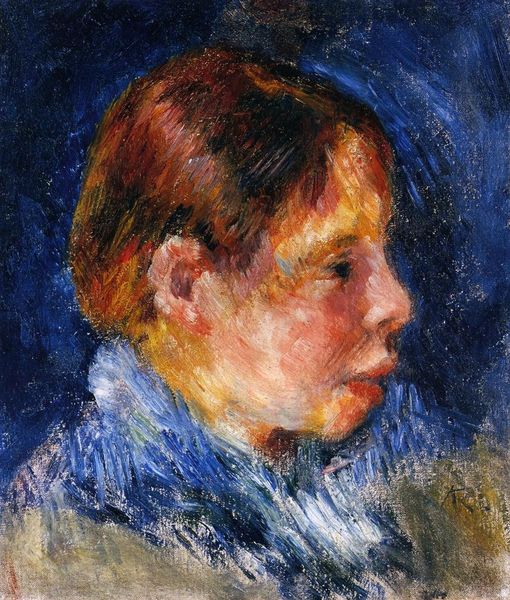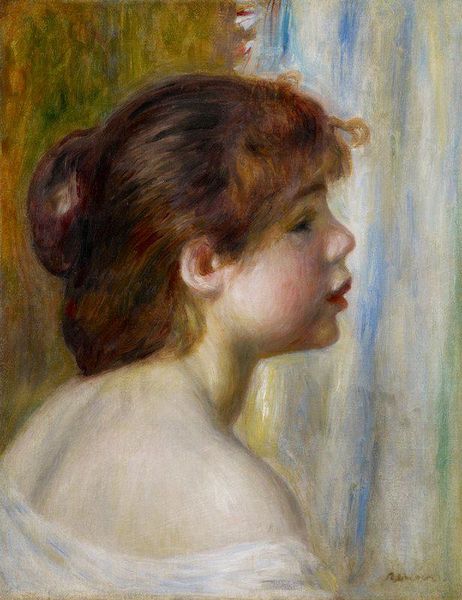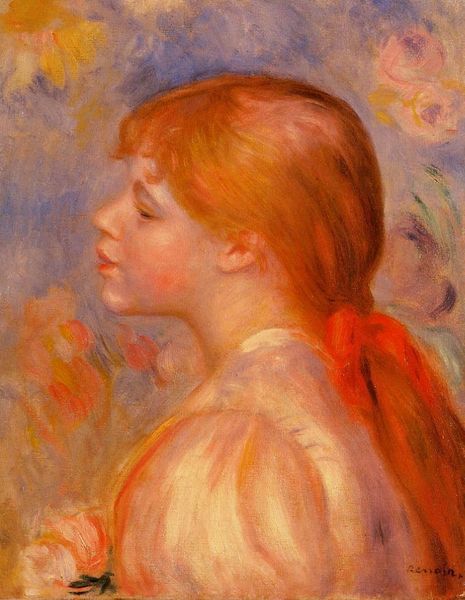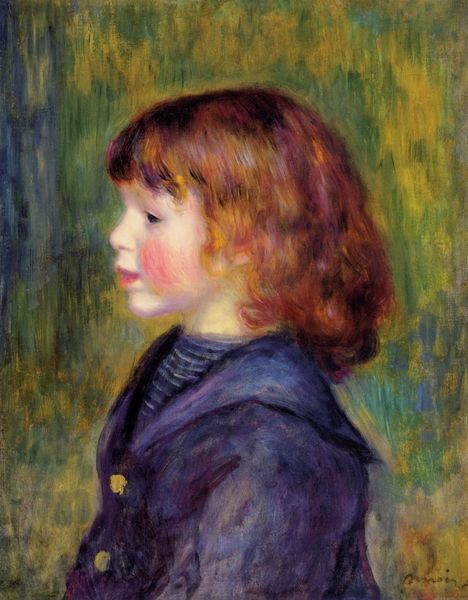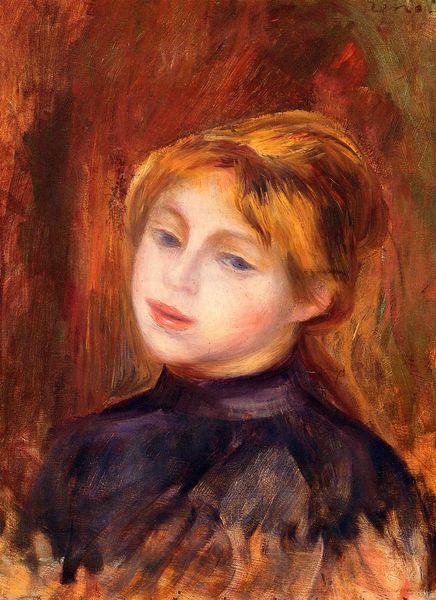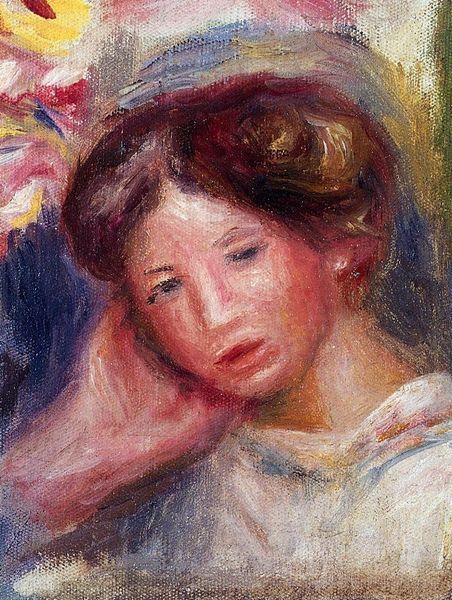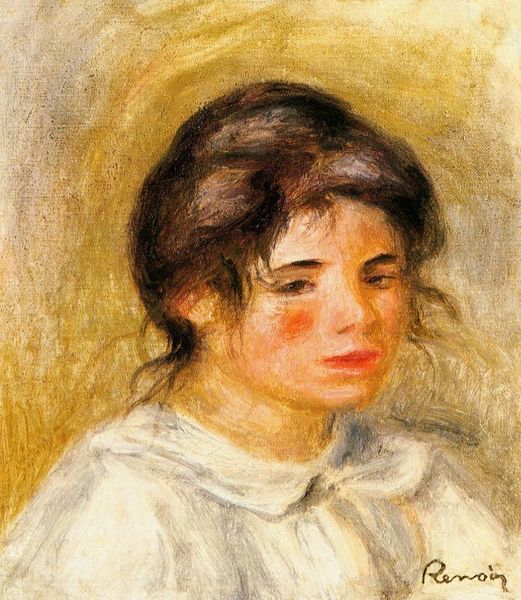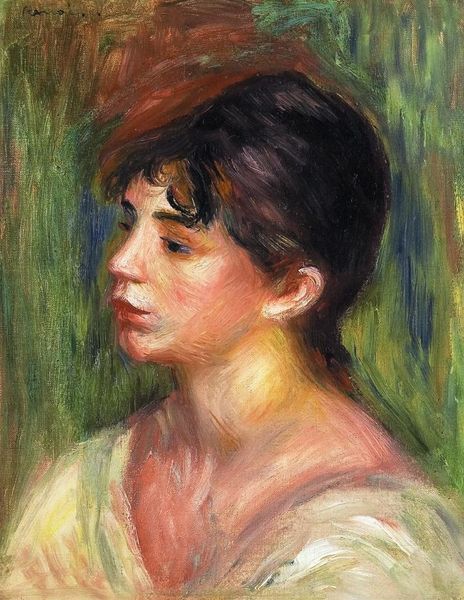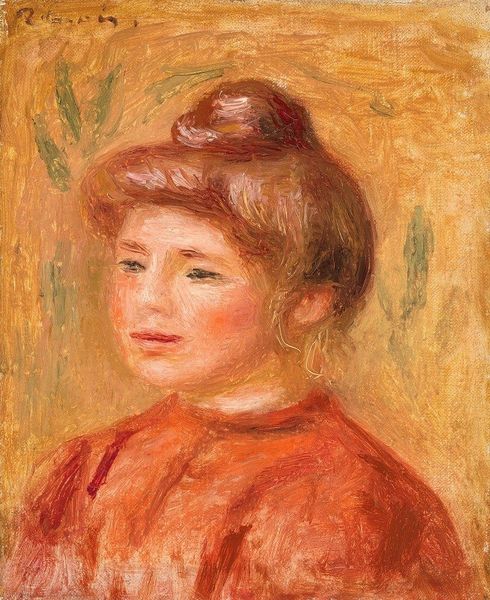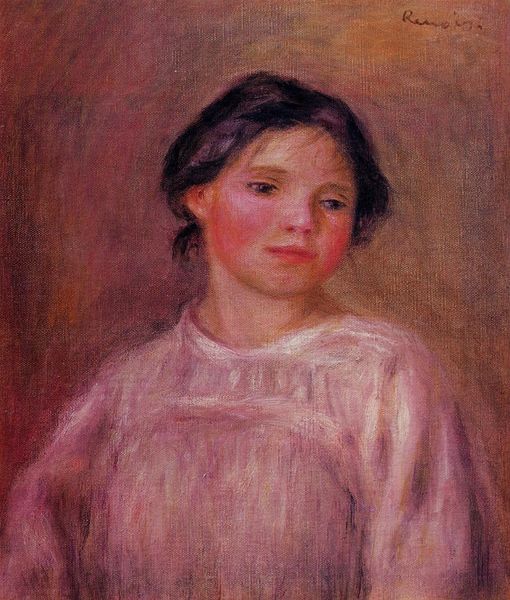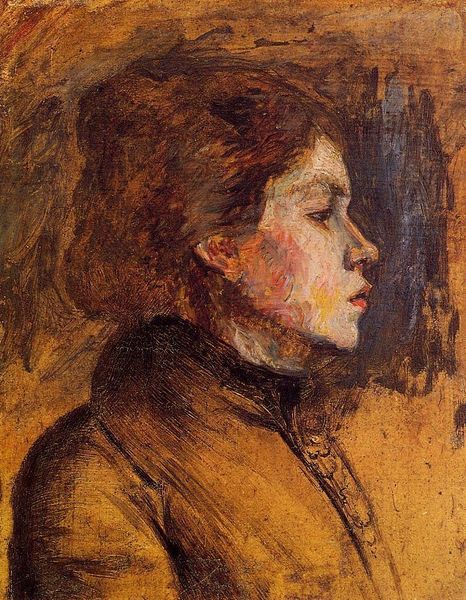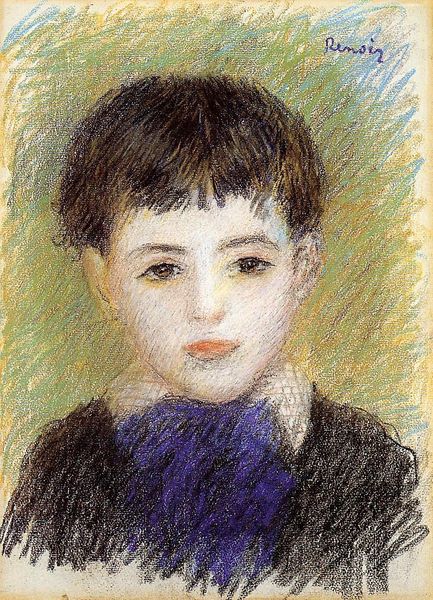
painting, oil-paint
#
portrait
#
head
#
face
#
painting
#
impressionism
#
oil-paint
#
figuration
#
oil painting
#
human
#
painting painterly
Copyright: Public domain
Curator: Look at how Renoir, in his 1876 painting “Margot,” uses these layered strokes of oil paint. It’s less about precise representation, more about capturing light and color in the moment. Editor: The way her gaze is directed downward really sets a tone. There’s a somber mood to this portrait, even melancholic, hinting perhaps at the lived experience of women in that era. It resonates even now, given ongoing patriarchal power structures. Curator: Exactly. He builds her likeness from a patchwork of contrasting warm and cool colors, not trying to perfectly replicate skin tone, but to create a shimmering effect. We’re getting a sense of the materiality right here – how Renoir’s labor becomes visual poetry. Editor: Absolutely. It's difficult not to consider that within the social framework of 19th-century France. Were women adequately compensated, for example? Art pieces are historical artifacts reflecting class structures, not just art objects created in a bubble. Curator: Well, consider the craft of portraiture itself. Think about how artists’ studios operated, with apprentices grinding pigments and stretching canvases. "Margot" doesn't shy away from revealing the constructed nature of painting itself. The brushstrokes are clearly visible, challenging academic traditions. Editor: Right, it speaks to Impressionism’s departure from strict academic representation. How can this artwork reflect the historical challenges encountered by individuals identifying as female at that moment in time? Is she Renoir's daughter, friend or hired help? And also, considering the historical canon dominated by males. Is that why the male gaze perspective remains at the forefront here? Curator: Maybe we could read her dress as a kind of uniform that speaks to her social role? What might those colours imply about Renoir's choice of subject and the labour involved in producing this piece? Editor: Perhaps, reflecting our own positions, the dialogue invites others to question, examine, and act as they discover how art fits in the framework of identity and social problems. Curator: Absolutely. In this interplay, it gives us a wider vision of not only "Margot," but about the time, materials and labor it took to make her.
Comments
No comments
Be the first to comment and join the conversation on the ultimate creative platform.
